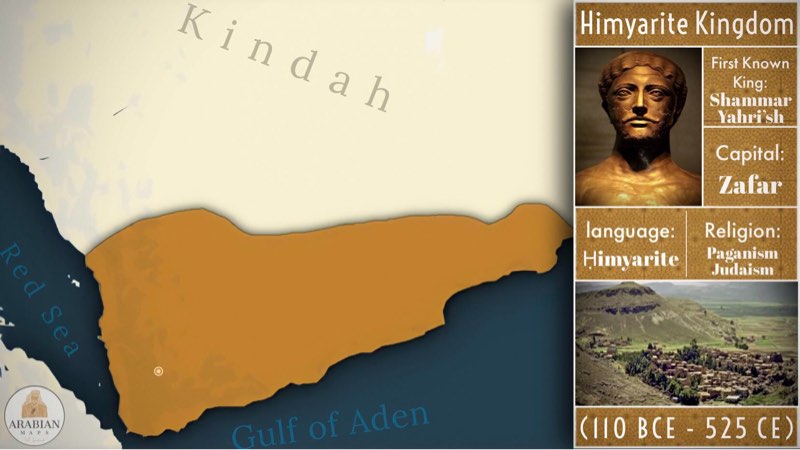Who were Himyarites?
The Himyarites were an ancient people who ruled over the southwestern part of the Arabian Peninsula, mainly in present-day Yemen, from around the 2nd century BCE to the 6th century CE. They were known for their trade, culture, and religion, and they had a complex political history involving alliances and conflicts with other regional powers such as the Aksumites, the Romans, the Persians, and the Arabs. The Himyarites were also one of the earliest adopters of Judaism in the Arabian Peninsula, and they established a Jewish kingdom that lasted until the rise of Islam.
The end of the Himyarite Kingdom
The Himyarite Kingdom, which had been a dominant power in the southwest Arabian Peninsula, came to an end in the early 6th century CE, around 525 CE. The decline and eventual collapse of the Himyarite Kingdom can be attributed to the following key events and factors:
1. Religious Conflict: The Himyarite ruler at the time, Yusuf As'ar Yath'ar, known as Dhu Nuwas, was a Jewish king who began persecuting Christians in his realm. This persecution, especially the massacre of Christians in Najran, sparked significant international concern.
2. Aksumite Invasion: The Christian Aksumite Empire, located in modern-day Ethiopia and Eritrea, intervened on behalf of the persecuted Christians. The Aksumites, under King Kaleb, launched an invasion of the Himyarite Kingdom.
3. Defeat of Dhu Nuwas: The Aksumite forces defeated the Himyarite army, and Dhu Nuwas reportedly died, possibly by suicide. His death marked the end of indigenous Himyarite rule.
4. Aksumite Control: After the defeat of Dhu Nuwas, the Aksumites installed a Christian viceroy, who ruled on behalf of the Aksumite king. Although Himyar remained a significant region, it was no longer an independent kingdom.
5. Later Developments: The Aksumite presence in Yemen continued until about 570 CE when the Sasanian Empire took control of the region. This shift set the stage for the eventual rise of Islam in the 7th century.
The end of the Himyarite Kingdom was shaped by religious conflict and foreign intervention, reflecting the complex dynamics of power, faith, and politics in the region during that period.



